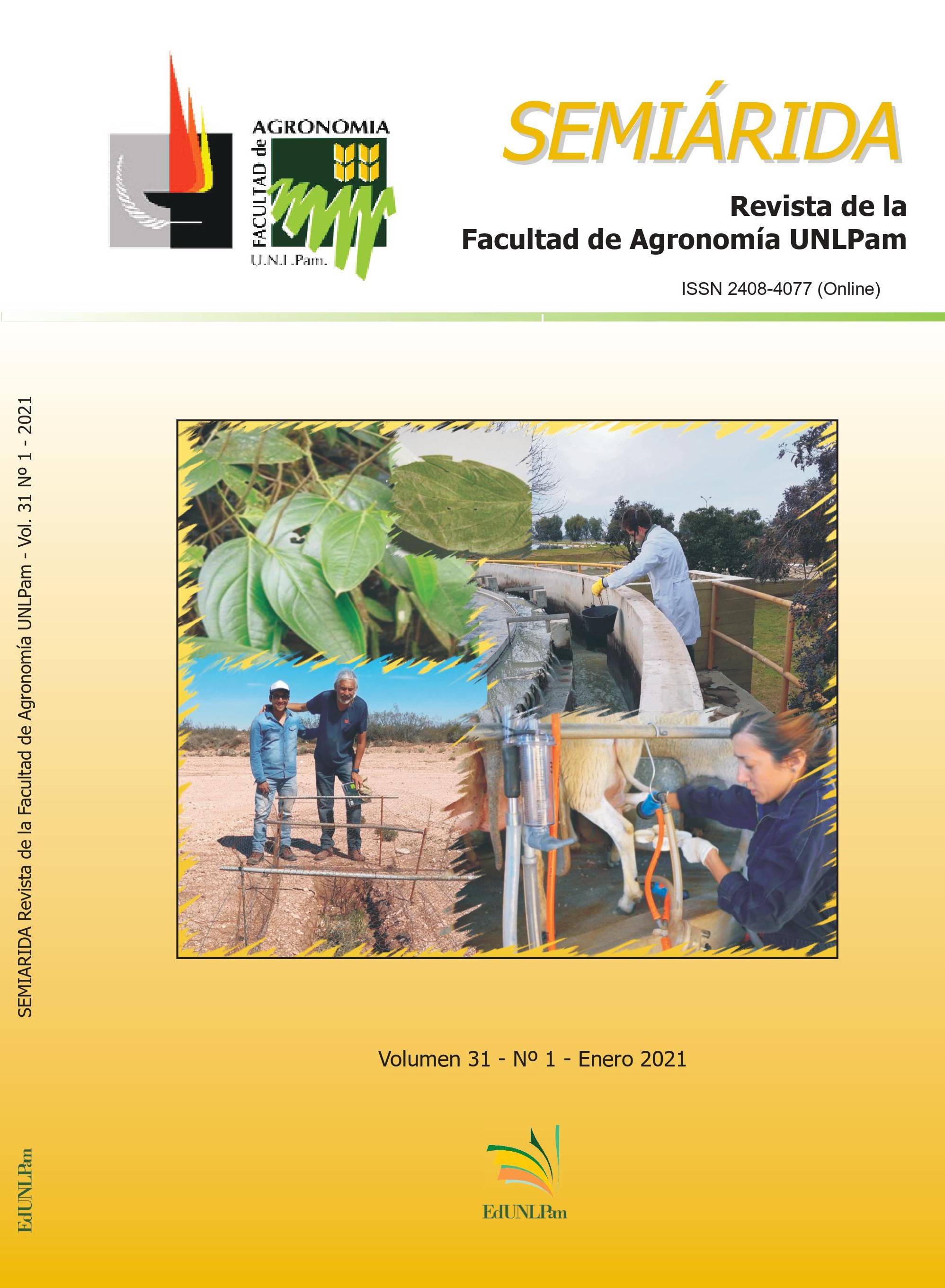Ver ítem
- xmlui.general.dspace_homeCentros Regionales y EEAsCentro Regional La Pampa - San LuisEEA San LuisArtículos científicosxmlui.ArtifactBrowser.ItemViewer.trail
- Inicio
- Centros Regionales y EEAs
- Centro Regional La Pampa - San Luis
- EEA San Luis
- Artículos científicos
- Ver ítem
Mastitis subclínicas en un rodeo de ovejas lecheras pampinta en la provincia de La Pampa
Resumen
Se han estudiado aspectos de la oveja Pampinta, una raza sintética desarrollada en la EEA de Anguil, constituida por Frisona del Este (East Friesian) y Corriedale. Es considerada de triple propósito (carne, leche y lana), pero seleccionada fenotípicamente hacia la raza Frisona del Este, siendo una de las principales razas que se la utiliza en ordeñe en Argentina. El objetivo de este trabajo es describir las mastitis subclínicas (MSC) que ocurren en la
[ver mas...]
Se han estudiado aspectos de la oveja Pampinta, una raza sintética desarrollada en la EEA de Anguil, constituida por Frisona del Este (East Friesian) y Corriedale. Es considerada de triple propósito (carne, leche y lana), pero seleccionada fenotípicamente hacia la raza Frisona del Este, siendo una de las principales razas que se la utiliza en ordeñe en Argentina. El objetivo de este trabajo es describir las mastitis subclínicas (MSC) que ocurren en la majada del Tambo Modelo de la Experimental de Anguil, con datos recogidos en los controles lecheros entre los años 2009 y 2014. Se utilizó un modelo animal con efectos aleatorios y efectos fijos como edad al parto; año de lactancia; tipo de cría y parto y clase de producción lechera. Se utilizó el programa estadístico SAS para los datos de producción y un Threshold Model (TM, Legarra et al., 2008) para mastitis. La producción de leche no estuvo relacionada con la incidencia de mastitis. El recuento de células somáticas (RCS) varía a lo largo de la lactancia, teniendo valores elevados al comienzo, luego desciende y se mantiene. La edad, la presencia de MSC y el nivel de producción de leche son factores que influyen en el RCS. El ambiente donde se encuentren lo animales puede tener factores estresantes que pueden interferir en el sistema inmunológico. Se necesitan más estudios y en otros establecimientos para poder generalizar estos resultados, lo que si hay que tener en cuenta que existe una demanda en los procesos de selección.
[Cerrar]
Some aspects of the Pampinta sheep, a synthetic breed developed in the EEA of Anguil, constituted by East Friesian (East Friesian) and Corriedale, have been studied. Considered as triple purpose (meat, milk and wool), but phenotypically selected towards the East Friesian breed, being one of the main breeds that is used in milking in Argentina. The objective of this work is to describe the subclinical mastitis
(MSC) that occur in the flock of the Tambo
[ver mas...]
Some aspects of the Pampinta sheep, a synthetic breed developed in the EEA of Anguil, constituted by East Friesian (East Friesian) and Corriedale, have been studied. Considered as triple purpose (meat, milk and wool), but phenotypically selected towards the East Friesian breed, being one of the main breeds that is used in milking in Argentina. The objective of this work is to describe the subclinical mastitis
(MSC) that occur in the flock of the Tambo Model of the Experimental of Anguil, with data collected in the dairy controls between 2009 and 2014. An animal model was a used with random effects and fixed effects such as age at childbirth; year of lactation; type of breeding and parturition and milk production class. The SAS statistical program was used for the production data and a Threshold Model (TM, Legarra et al., 2008) for mastitis. The graphics were made through the Infostat R package (R Core Team, 2013). Milk production was not related to the incidence of mastitis. The somatic cell count (SCC) varies throughout lactation, having high values at the beginning, then decreases and remains. The age, the presence of MSC and the level of milk production are factors that influence the SCC. The environment where animals are found can have stressors that can interfere with the immune system. More studies are needed and in order establishments in order to generalize results, which must be taken into account that there is a demand in the selection processes.
[Cerrar]

Fuente
Semiarida 31 (1) : 17-23. (2021)
Fecha
2021-01-01
Editorial
Facultad de Agronomía, Universidad Nacional de La Pampa
ISSN
2408-4077
Formato
pdf
Tipo de documento
artículo
Palabras Claves
Derechos de acceso
Abierto
 Excepto donde se diga explicitamente, este item se publica bajo la siguiente descripción: Creative Commons Attribution-NonCommercial-ShareAlike 2.5 Unported (CC BY-NC-SA 2.5)
Excepto donde se diga explicitamente, este item se publica bajo la siguiente descripción: Creative Commons Attribution-NonCommercial-ShareAlike 2.5 Unported (CC BY-NC-SA 2.5)


